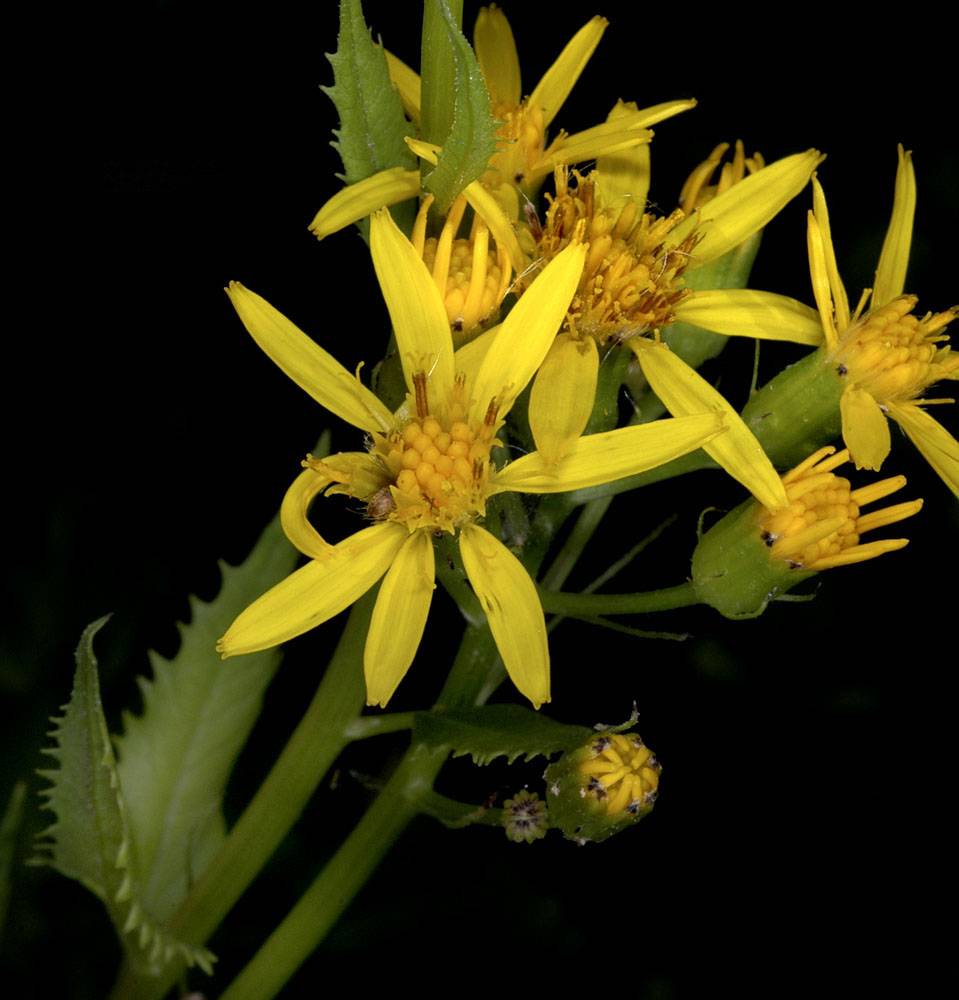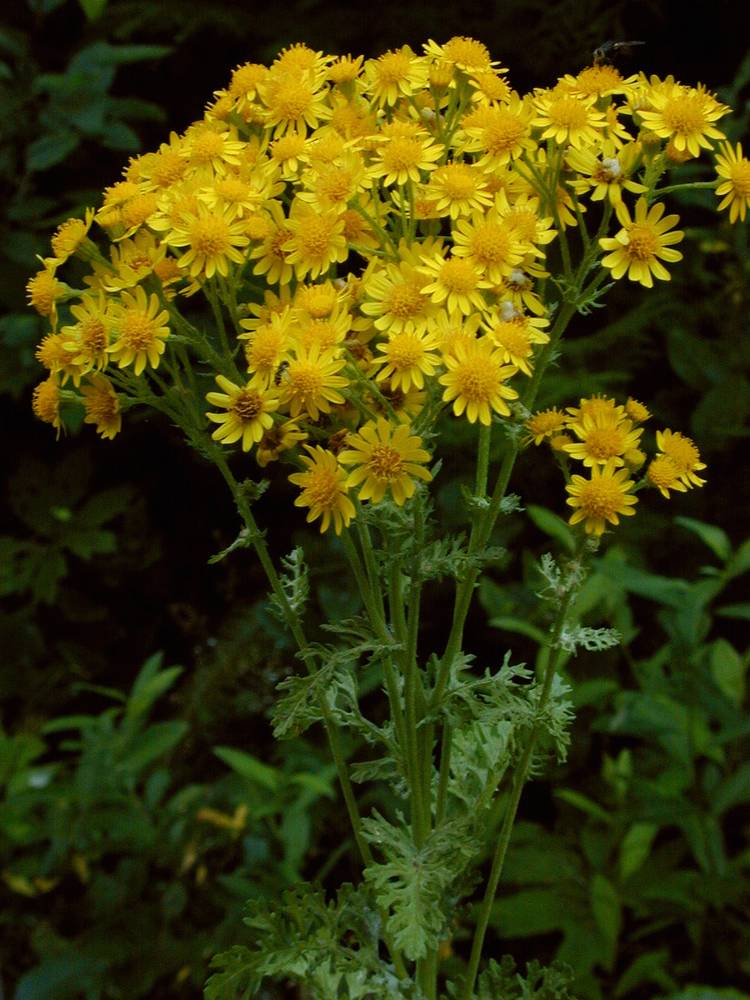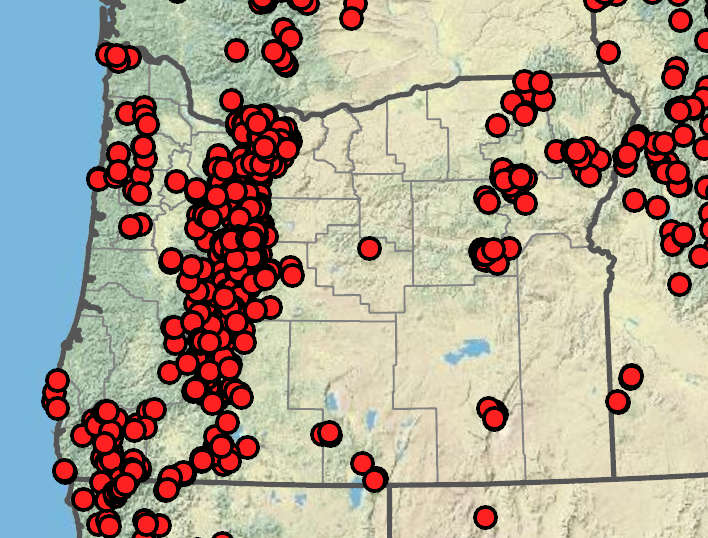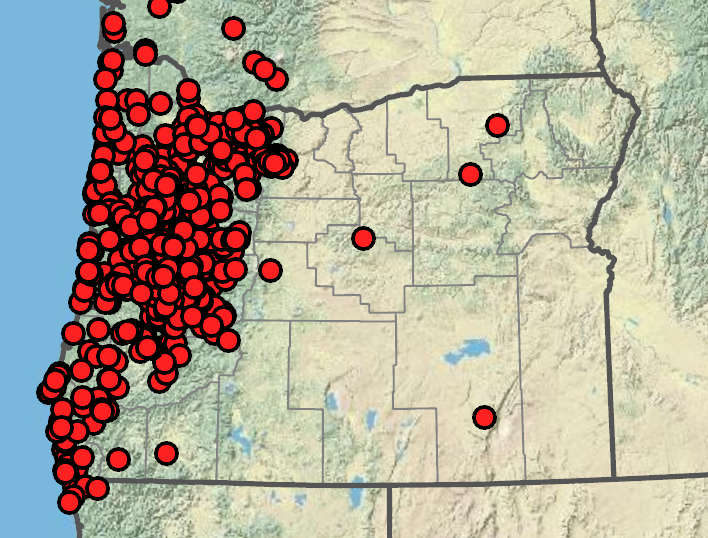Senecio triangularis
Senecio jacobaea
arrowleaf groundsel
stinking willie, tansy ragwort
1 or 2–4 and loosely clustered, glabrous or sparsely pubescent.
1, or rarely 2–4 and loosely clustered, often purple-tinged, sparsely and unevenly tomentose.
basal present at flowering;
cauline ± evenly distributed along stems, gradually reduced distally, narrowly to widely triangular, bases tapered to truncate or cordate;
margins dentate, rarely subentire;
surfaces sparsely tomentose to nearly glabrous;
proximal petiolate;
distal sessile.
basal usually withering before flowering;
cauline ± evenly distributed along stems;
distal slightly smaller; ovate to broadly ovate, bases tapered, usually 1–3-pinnate, ultimate margins dentate;
lobes obovate to spatulate, petiolate.
corymb- or ± raceme-like arrays;
bracts conspicuous.
compound corymb-like arrays;
bracts conspicuous but small.
cylindric to narrowly campanulate.
widely cylindric or urn-shaped.
~8;
rays 9–15 mm.
~13;
rays 8–12 mm.
35–45.
60–70+.
(8)13(21), 6–10 mm;
tips green, rarely black.
13, 3–4(5);
tips black or dark green.
2–6 bractlets, inconspicuous, rarely > 2 mm.
2–6 bractlets, inconspicuous, usually < 2 mm.
2.5–3.5 mm, glabrous.
0.75–1.3 mm, sparsely hairy or glabrous.
10–30(60).
(10)20–60+.
=40, 80.
=40.
Senecio triangularis
Senecio jacobaea
Open areas, rocky streambanks, wet meadows, bogs, damp places in coniferous forests. Flowering May–Sep. 0–2800 m. BR, BW, Casc, CR, ECas, Est, Lava, Sisk, WV. CA, ID, NV, WA; north to AK, northeast to MT, east to WY, southeast to NM. Native.
Some plants with narrow, subentire leaves that taper to the petioles have been found in acidic bogs in Washington and Oregon. A few authors recognize these as variety angustifolia. However, this author has observed several specimens (specifically indicated as being collected in bogs) that had both narrower leaves and the wider leaves more typical of variety triangularis on the same plant.
Disturbed areas, pastures, roadsides. Flowering May–Sep. 0–1600 m. Casc, CR, Est, Sisk, WV. CA, ID, WA; north to British Columbia, northeast to MT, northeastern North America; Europe. Exotic.
Senecio jacobea is an introduced weed, originally from Europe. It establishes in places with cool, wet summers and is particularly toxic to livestock. In most states where it occurs, this species has been declared a noxious weed.
Debra Trock
Debra Trock
- Local floras:
BC,
CA,
OR,
WA
- Local Web sites:
CalFlora,
CalPhotos,
Flora NW,
PNW Herbaria,
Turner Photog.
WildflowerSearch
iNaturalist (observations)
USDA Plants Database
- LBJ Wildflower Center
- SEINet
- Plants of the World Online
- Encyclopedia of Life
- Wikipedia
- Google Image Search
- Local floras:
BC,
CA,
OR,
WA
- Local Web sites:
CalFlora,
CalPhotos,
Flora NW,
PNW Herbaria,
Turner Photog.
WildflowerSearch
iNaturalist (observations)
USDA Plants Database
- LBJ Wildflower Center
- SEINet
- Plants of the World Online
- Encyclopedia of Life
- Wikipedia
- Google Image Search





